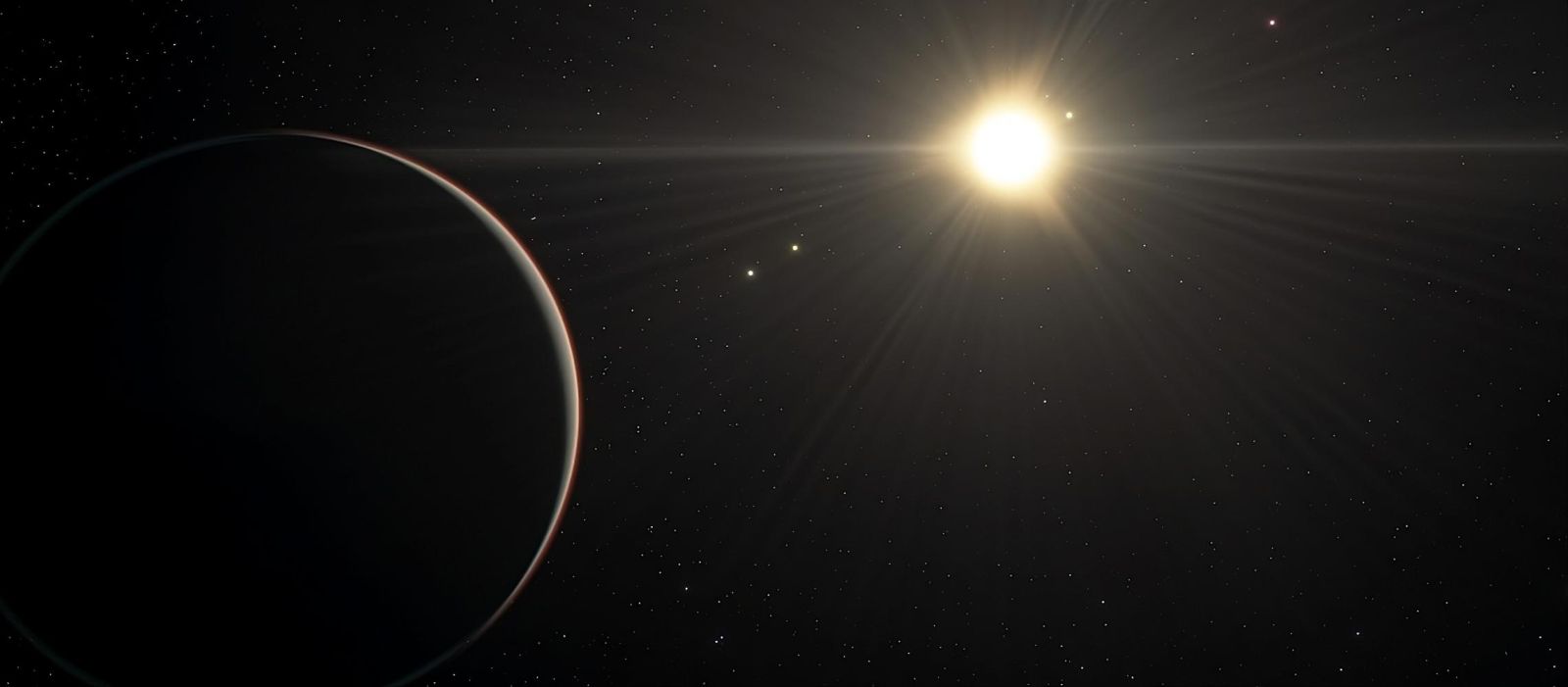Follow us on Google News (click on ☆)

This artist's impression shows the view of the planet in the TOI-178 system that orbits farthest from the star. New research conducted by Adrien Leleu and his colleagues using multiple telescopes, including ESO's Very Large Telescope, revealed that this resonant system has six exoplanets, and all but the closest one to the star move in their orbit according to a very specific rhythm.
© ESO/L. Calçada/spaceengine.org
Is this explained by observational bias or by the physical existence of two distinct populations of sub-Neptunes? Recent work by the PRN PlanetS, University of Geneva (UNIGE), and University of Bern (UNIBE) supports the latter hypothesis. Their findings are published in the journal Astronomy & Astrophysics.
Exoplanets are abundant in our galaxy. The most common ones are those whose size lies between the radius of Earth (about 4,000 miles) and that of Neptune (about 15,500 miles), called "Sub-Neptunes." It is estimated that 30% to 50% of Sun-like stars host at least one.
Calculating the density of these planets is problematic for scientists. To estimate it, their mass and radius must first be measured. The issue is that planets whose mass is measured using the TTV (Transit-Timing Variation) method are less dense than those measured using the radial velocity method, the other possible measurement technique.
"The TTV method involves measuring variations in the transit timing. Gravitational interactions between the planets in the same system will slightly change the timing of when the planets pass in front of their star," explains Jean-Baptiste Delisle, scientific collaborator at the Department of Astronomy, Faculty of Science, UNIGE, and co-author of the study. "The radial velocity method measures the star's velocity variations induced by the presence of the planet around it."
Eliminating any bias
An international team of astronomers led by scientists from PRN PlanetS, UNIGE, and UNIBE published a study explaining this phenomenon. It is not due to selection or observational biases but rather physical reasons. "Most of the systems measured by the TTV method are in resonance," explains Adrien Leleu, assistant professor at the Department of Astronomy, Faculty of Science, UNIGE, and principal author of the study.
Two planets are in resonance when the ratio of their orbital periods is a rational number. For instance, when one planet makes two orbits around its star, another planet completes exactly one. If multiple planets are in resonance, it is called a Laplace resonance chain. "We then wondered if there was an intrinsic connection between density and the resonant orbital configuration of a planetary system," continues Leleu.
To establish the link between density and resonance, astronomers first had to eliminate any biases in the data by rigorously selecting planetary systems for their statistical analysis. For instance, a large, low-mass planet detected in transit takes longer to be detected in radial velocities. This increases the risk of observations being interrupted before the planet is visible in the radial velocity data and thus before its mass can be estimated.
"This selection process would lead to a bias in the literature favoring higher masses and densities for planets characterized by the radial velocity method. Without mass measurements, the less dense ones would indeed be excluded from our analyses," explains Leleu.
Once this filtering was done, the astronomers were able to determine, using statistical tests, that the density of sub-Neptunes is lower in resonant systems than their counterparts in non-resonant systems, regardless of the method used to determine their mass.
A matter of "resonance"
Scientists suggest several avenues to explain this link, including planetary system formation processes. The favored theory in the study posits that all planetary systems converge to a resonant chain state in the early stages of their existence, but only 5% remain stable. The other 95% become unstable. The resonance chain then breaks, leading to a series of "catastrophes," such as collisions between planets. The planets merge, increasing their density before stabilizing in non-resonant orbits.
This process thus generates two distinct populations of sub-Neptunes: dense and less dense. "The numerical models of planetary system formation and evolution that we have developed in Bern over the past two decades accurately reproduce this trend: planets in resonance are less dense. This study, furthermore, confirms that most planetary systems have experienced giant collisions, similar to or even more violent than the one that gave birth to our Moon," concludes Yann Alibert, professor at the Division of Space Research and Planetary Sciences (WP) and co-director of the Center for Space and Habitability at UNIBE, co-author of the study.